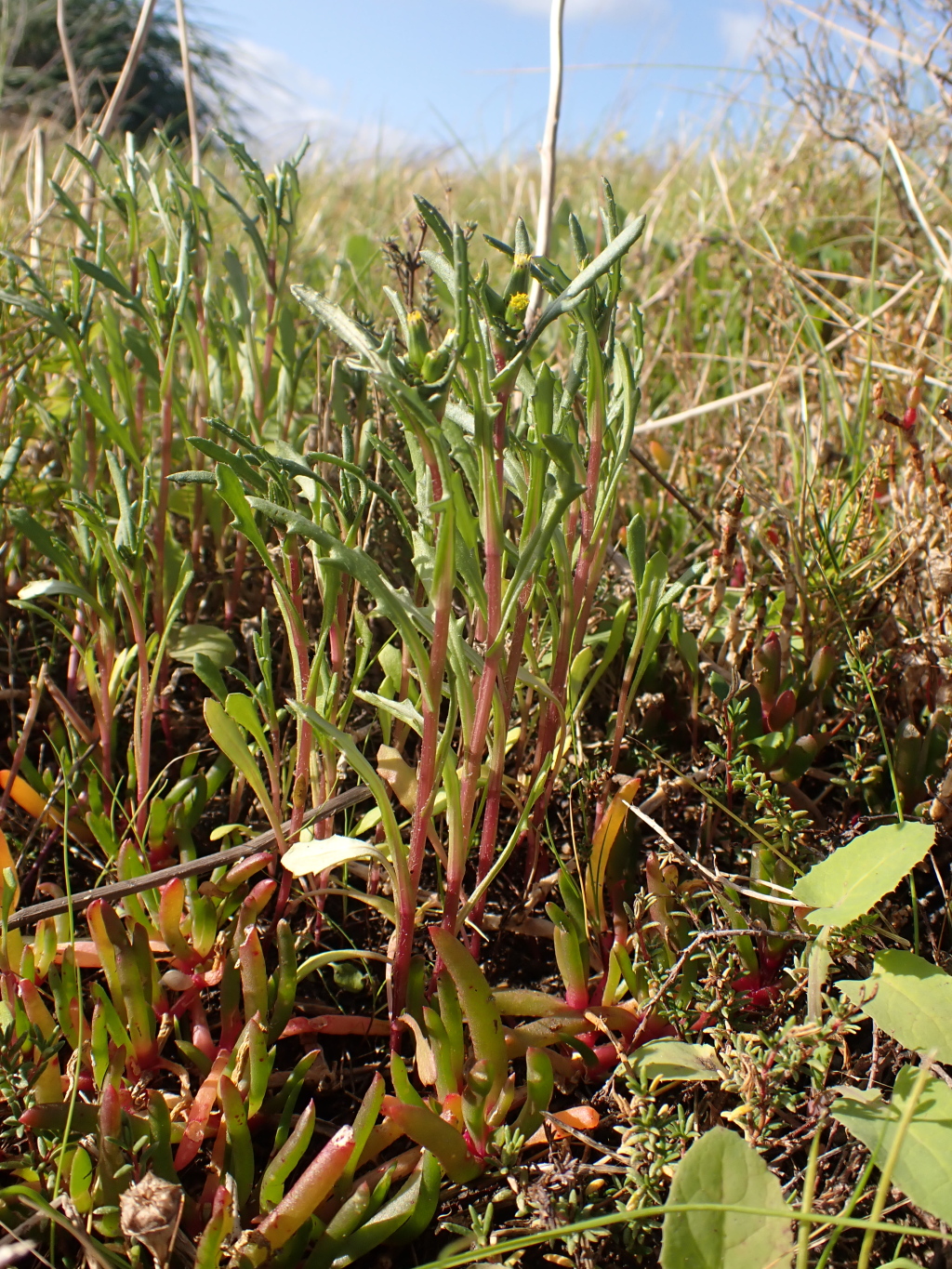Senecio halophilus
I.Thomps.Erect, few-branched or simple, ephemeral or annual herb to c. 40 cm high, sparsely pubescent with scattered, erect or appressed septate hairs. Leaves sessile, attenuate to cuneate at base or becoming slightly cordate upwards, narrow-elliptic, oblanceolate or ovate in outline, to 7 cm long, to 2 cm wide, glabrescent, undivided or lobate to sub-pinnatisect; margin entire, denticulate or dentate. Inflorescence corymbose, with 1–18 capitula; capitula radiate; involucre narrowly campanulate, 5–7 mm long; bracts 8–13; bracteoles present. Ray florets 5–8, yellow, ligules up to 1 mm long, or rarely not developed (then corolla-tube not toothed apically), not usually exceeding bracts; disc florets 12–17, yellow. Cypselas cylindric, those of ray florets 2.5–3.5 mm long, with 50–100 % of surface obscured by papillose hairs that clearly exceed pappus ring, those of disc florets 2–3 mm long, with 50–100 % of surface obscured by papillose hairs that clearly exceed pappus ring; pappus of slender white hairs 3–4 mm long, deciduous. Flowers mostly winter and spring.
LoM, MuM, Wim, VVP, GipP, OtP. In saline soil along the edges of inland lakes in western Victoria and in coastal areas around the Bellarine Peninsula and Port Phillip Bay with a disjunct easterly occurrence on St Margaret Island near Corner Inlet.
Segregated from Senecio glossanthus.
 Spinning
Spinning

